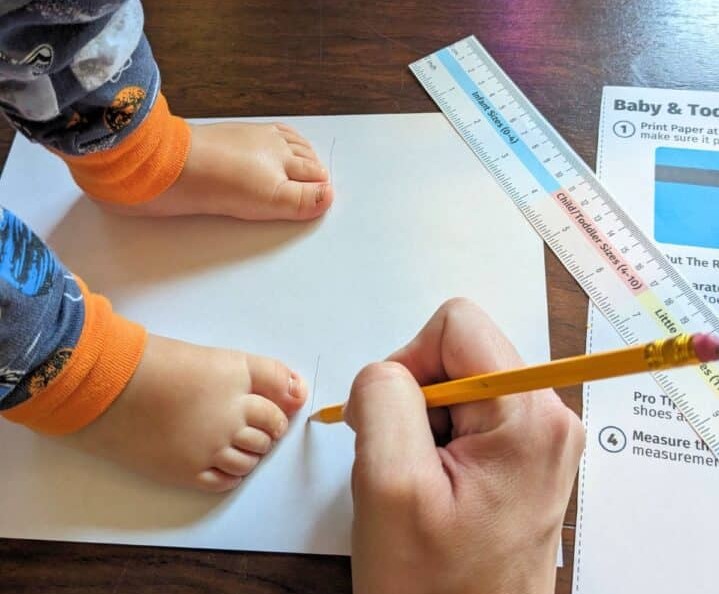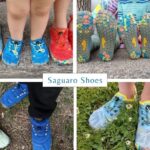Toddler shoe sizes are based on foot length in inches or centimeters. Sizes typically range from 0 to 13, with half sizes available.
Choosing the right shoe size for toddlers is essential for their comfort and development. As toddlers grow, their feet change rapidly, making it crucial to measure their feet regularly. Shoe sizes for toddlers usually differ from adult sizes. Each brand may have slight variations in sizing, so always check the size chart.
The best time to measure a child’s feet is at the end of the day when they are most swollen. Look for shoes with good support and flexibility to help your child walk comfortably. Proper fit can prevent foot problems and ensure happy steps for your little one.
Table of Contents
Introduction To Toddler Shoe Sizing
Understanding toddler shoe sizing is crucial for parents. Proper fit ensures comfort and healthy foot development. Toddlers grow quickly, making frequent size checks important. Knowing how sizing works helps in choosing the right shoes.
The Importance Of Proper Fit
Choosing the right size is vital for many reasons:
- Comfort: Properly fitting shoes prevent blisters and soreness.
- Foot Health: Shoes that fit well promote healthy foot growth.
- Balance: The right fit helps toddlers walk and run safely.
- Confidence: Comfortable shoes boost a child’s confidence in movement.
Parents should measure their child’s feet regularly. Feet can grow several sizes in a year. A shoe that is too tight can cause pain. Shoes that are too loose can lead to trips and falls.
Challenges In Sizing For Toddlers
Sizing for toddlers can be tricky. Here are some common challenges:
- Varied Sizes: Different brands have different sizing charts.
- Growth Spurts: Toddlers can grow unexpectedly fast.
- Foot Shape: Every child’s foot shape is unique.
- Online Shopping: Buying shoes online can lead to sizing issues.
To avoid these challenges, measure feet properly. Use a ruler or a tape measure. Check the brand’s sizing chart before purchasing. Always try shoes on with the child standing.
The Basics Of Shoe Sizing For Toddlers
Shoe sizing for toddlers can be confusing. Understanding the basics helps parents choose the right fit. Properly fitting shoes support healthy foot development. Let’s explore how toddler shoe sizes work.
Length And Width Measurements
Shoe sizes for toddlers depend on two main measurements:
- Length: The distance from the toe to the heel.
- Width: The measurement across the ball of the foot.
To measure your toddler’s foot:
- Place a piece of paper on the floor.
- Have your child stand on the paper.
- Trace around their foot.
- Measure the longest and widest points.
This gives you the correct length and width for sizing. Remember, toddler feet grow quickly. Measure their feet every few months.
Common Sizing Systems
Different regions use various sizing systems. Here are the most common:
| System | Size Range | Typical Age |
|---|---|---|
| US Sizes | 0 to 13 | Birth to 4 years |
| UK Sizes | 0 to 13 | Birth to 4 years |
| EU Sizes | 16 to 30 | Birth to 4 years |
US and UK sizes are often similar. EU sizes differ slightly. Always check brand sizing charts before buying.
Understanding these systems helps find the right fit. Keep your child’s comfort and safety in mind.
Measuring Your Toddler’s Feet At Home
Measuring your toddler’s feet at home is essential. Proper shoe size ensures comfort and support. Follow simple steps to get accurate measurements.
Tools And Techniques
Gather a few tools to measure your toddler’s feet. You need:
- A piece of paper
- A pencil
- A ruler or measuring tape
- A flat surface
Here’s how to measure:
- Place the paper on a flat surface.
- Have your toddler stand on the paper.
- Trace around their foot with a pencil.
- Measure the longest part of the foot.
- Repeat for the other foot.
Always measure both feet. Feet can be different sizes.
Tips For Accurate Measurements
Follow these tips for the best results:
- Measure at the end of the day. Feet swell during the day.
- Use socks similar to those worn with shoes.
- Stand straight while measuring.
- Double-check the measurement.
Record the measurements. Use these numbers when shopping for shoes.
Choose shoes with a little extra room. This allows for growth. A thumb’s width between the toe and shoe end is ideal.
Understanding Size Charts
Choosing the right shoe size for toddlers can be confusing. Size charts help you find the perfect fit. Understanding these charts is essential for your child’s comfort and safety.
Interpreting Brand-specific Guides
Each shoe brand has its own size guide. These guides can vary significantly. Here’s how to read them:
- Check the brand’s official website.
- Look for the size chart specific to toddlers.
- Measure your child’s foot length in inches or centimeters.
Most brands provide a size conversion table. This table shows foot length versus shoe size. For example:
| Foot Length (inches) | US Toddler Size | UK Toddler Size | EU Toddler Size |
|---|---|---|---|
| 4.5″ | 5 | 4 | 20 |
| 5.0″ | 6 | 5 | 21 |
| 5.5″ | 7 | 6 | 22 |
Converting Sizes Globally
Shoe sizes differ around the world. Knowing how to convert them is vital. Here’s a quick guide:
- US sizes are different from UK sizes.
- EU sizes often use a different scale.
- Japan uses a metric system for shoe sizes.
To convert sizes:
- Use online conversion tools.
- Refer to international size charts.
- Always measure your child’s foot before buying.
Understanding these size charts makes shopping easier. Your toddler will enjoy their new shoes comfortably.
Growth Spurts And Shoe Sizes
Toddlers experience rapid changes in growth. Their feet grow quickly, making it essential to monitor shoe sizes regularly. Understanding how growth spurts affect shoe sizes helps parents keep their little ones comfortable and supported.
Predicting Size Changes
Growth spurts can be unpredictable. Here are some signs to help predict size changes:
- Increased appetite
- Sudden bursts of energy
- Wearing out shoes faster than usual
- Complaints of tight shoes or discomfort
Toddlers usually grow about half a size every few months. Keep an eye on their shoe sizes. Use a measuring tool or visit a store to check their feet.
When To Buy New Shoes
Buying new shoes at the right time is crucial. Here are some tips:
- Measure feet every 2-3 months.
- Look for signs of discomfort.
- Check the fit of current shoes.
When trying on new shoes, ensure:
- There is a thumb’s width of space at the toe.
- The heel should fit snugly without slipping.
Regularly update your toddler’s shoes. This keeps their feet healthy and happy.
The Role Of Socks In Sizing
Socks play an important part in choosing toddler shoe sizes. They affect how shoes fit. Getting the right sock thickness helps ensure comfort. A proper fit prevents blisters and discomfort for little feet.
Choosing The Right Sock Thickness
Different sock thicknesses can change how shoes fit. Here are some common sock types:
- Thin socks: These allow for a snug fit.
- Medium socks: These provide a balance of comfort and fit.
- Thick socks: These can make shoes feel tight.
Consider the activity level of your toddler. For active play, thicker socks may add warmth. For casual wear, thin or medium socks might be better.
Impact On Shoe Size Selection
Sock thickness directly influences shoe size selection. Here’s how to consider it:
- Measure your toddler’s foot size.
- Choose socks based on the season.
- Try shoes on with the chosen socks.
- Walk around to check comfort.
Use the following table for quick reference:
| Sock Thickness | Recommended Shoe Size Adjustment |
|---|---|
| Thin | No adjustment needed |
| Medium | Add half a size |
| Thick | Add one full size |
Always remember, the right socks help keep little feet happy. Choose wisely for the best fit.
Signs Of Poorly Fitting Shoes
Identifying poorly fitting shoes is crucial for your toddler’s comfort. Shoes that do not fit well can cause various issues. Watch for certain signs that indicate discomfort and potential long-term effects.
Recognizing Discomfort
Toddlers may not always express discomfort verbally. Look for these signs:
- Fussiness: Increased irritability during shoe-wearing times.
- Frequent removal: Constantly trying to take off their shoes.
- Red marks: Notable red areas on their feet after wearing shoes.
- Walking issues: Hesitant or awkward walking patterns.
- Foot odor: Excessive sweating can indicate tight shoes.
Check the fit regularly. Children’s feet grow quickly. A snug fit is important, but shoes must not pinch or squeeze.
Long-term Foot Health Concerns
Wearing poorly fitting shoes can lead to serious issues. Some long-term effects include:
| Foot Problem | Description |
|---|---|
| Flat Feet | Weak arches due to lack of support. |
| Bunions | Deformity at the base of the big toe. |
| Corns and Calluses | Thickened skin from friction and pressure. |
| Ingrown Toenails | Toenails growing into the surrounding skin. |
| Foot Pain | General discomfort affecting mobility. |
Monitor your child’s shoes closely. Replace them as soon as they show signs of wear. Prioritize comfort and proper fit for healthy development.
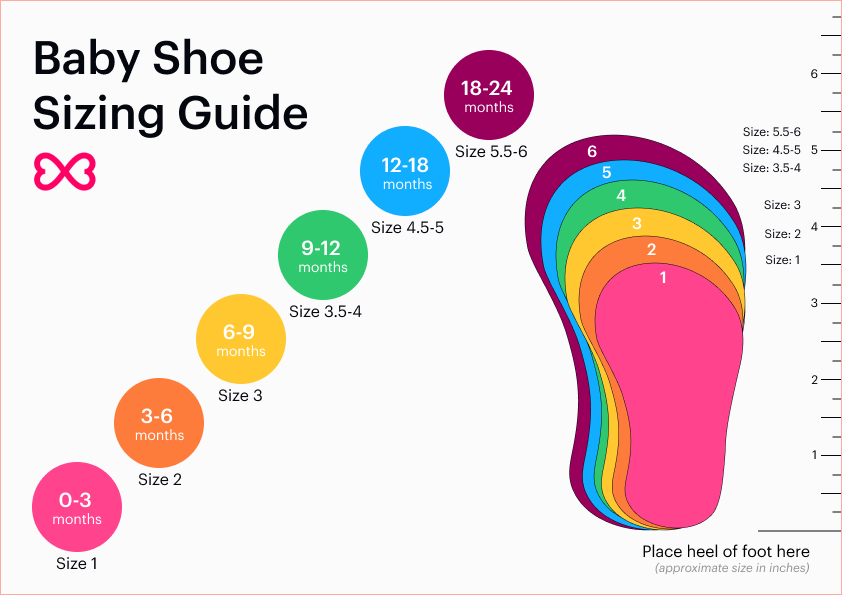
Credit: www.sittercity.com
Navigating Different Types Of Toddler Shoes
Choosing the right shoes for toddlers is essential. Different activities require different types of shoes. Understanding these types can help you make the best choice for your little one.
Sneakers Vs. Sandals
Sneakers and sandals serve different purposes. Here’s a quick breakdown:
| Feature | Sneakers | Sandals |
|---|---|---|
| Comfort | Highly comfortable with cushioning. | Breathable and light. |
| Support | Offers ankle and arch support. | Less support, best for casual wear. |
| Best Use | Play and active movement. | Warm weather and indoor use. |
Pick sneakers for outdoor play. Choose sandals for hot days. Comfort is key for growing feet.
Formal Shoes And Boots
Formal shoes and boots are stylish options. They are suitable for special occasions. Consider these aspects:
- Formal Shoes:
- Best for events like weddings.
- Usually have a shiny finish.
- Less cushioning than sneakers.
- Boots:
- Great for colder weather.
- Provide extra warmth and protection.
- Look for waterproof options for wet conditions.
Choose formal shoes for special events. Boots are perfect for winter adventures.
Shopping For Toddler Shoes
Choosing the right shoes for toddlers is important. Their feet grow quickly. Proper fitting shoes support their growth and development. Here are some tips to make shopping easier.
Best Practices
Follow these best practices to find the perfect toddler shoes:
- Measure Feet Regularly: Check sizes every few months.
- Try Shoes On: Always have your child try shoes before buying.
- Check for Comfort: Ensure there is enough room for toes.
- Look for Flexibility: Shoes should bend easily at the ball.
- Choose Breathable Materials: This helps keep feet dry.
Online Vs. In-store Purchases
Shopping online and in-store each has benefits. Consider these points:
| Criteria | Online Shopping | In-Store Shopping |
|---|---|---|
| Convenience | Shop anytime from home. | Immediate feedback on fit. |
| Selection | Wider variety available. | Limited to store inventory. |
| Returns | May require shipping back. | Easy exchanges at the store. |
| Fit Testing | Hard to gauge size. | Easy to try on shoes. |
Choose the method that works best for you and your toddler. Each has its own advantages. Make sure to prioritize comfort and proper fit.
Adjustable Features For Growing Feet
Choosing the right shoes for toddlers is crucial. Their feet grow quickly. Adjustable features help accommodate this growth. They offer comfort and support. Let’s explore some key adjustable features in toddler shoes.
Velcro Straps And Adjustable Insoles
Velcro straps are popular in toddler shoes. They provide a snug fit. Parents can easily adjust them as needed. This feature is essential for active toddlers. It keeps shoes secure during play.
Adjustable insoles are another great option. These insoles can be removed or replaced. They allow for extra room as feet grow. This feature extends the life of the shoe.
- Easy to use
- Customizable fit
- Encourages independence
Benefits Of Flexible Soles
Flexible soles offer many advantages for toddlers. They support natural movement. A flexible sole allows little feet to bend and flex. This promotes healthy foot development.
Here are some key benefits:
- Better balance
- Improved coordination
- Comfort during walking
Flexible soles also reduce the risk of injury. They help toddlers feel the ground. This connection helps develop their motor skills.
Seasonal Considerations In Shoe Sizing
Sizing toddler shoes changes with the seasons. Different weather conditions affect how shoes fit. Summer shoes often differ from winter shoes. Understanding these differences helps ensure comfort and safety.
Summer Vs. Winter Shoes
Summer and winter shoes serve different purposes. They also vary in size due to materials and design.
| Feature | Summer Shoes | Winter Shoes |
|---|---|---|
| Material | Lightweight, breathable | Thick, insulated |
| Fit | Looser fit for airflow | Tighter fit for warmth |
| Size Adjustment | Usually a half size up | May need to size up |
Summer shoes are often made from lightweight materials. This allows for airflow and comfort. Parents should consider a half size up for growing feet.
Winter shoes need to be thicker for insulation. These shoes might feel tighter due to thermal socks. Proper fit is crucial for safety and mobility.
Accounting For Thermal Socks
Thermal socks add extra warmth in winter. They also change how shoes fit. Parents should keep this in mind while shopping.
- Choose shoes with a bit more room.
- Try shoes on with thermal socks.
- Look for adjustable straps for a better fit.
Wearing thermal socks can make shoes feel snug. Always check for comfort and wiggle room. Proper sizing helps prevent blisters and discomfort.
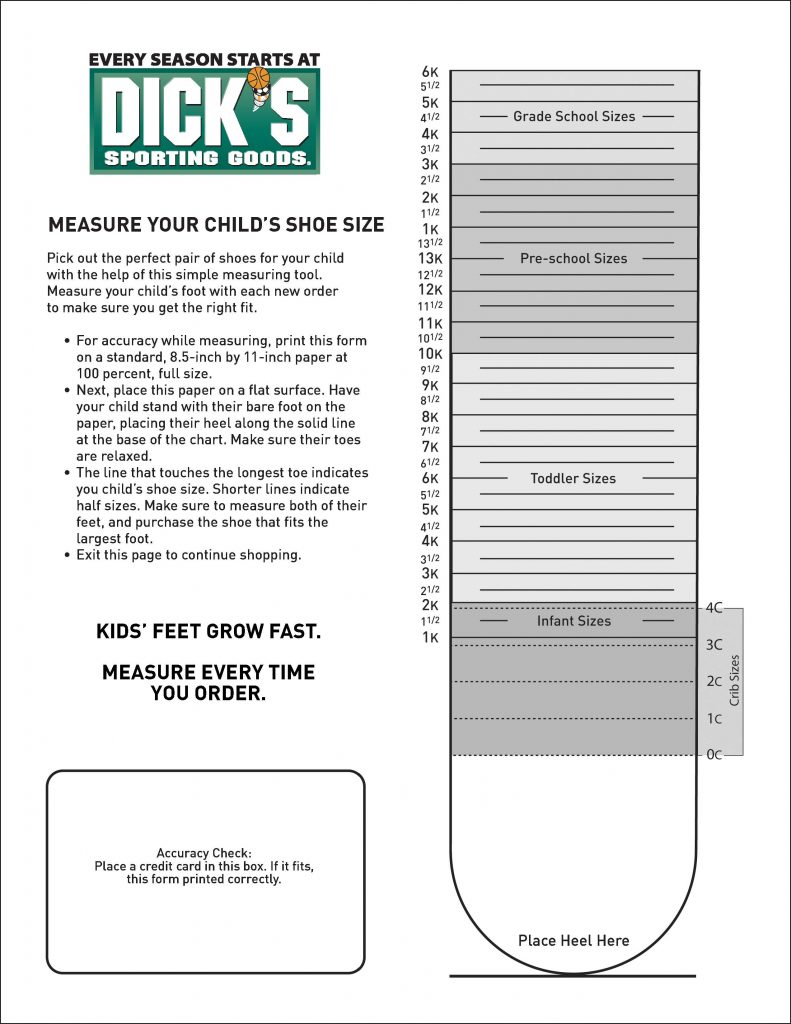
Credit: www.dickssportinggoods.com
The Psychological Aspect Of Shoe Shopping With Toddlers
Shoe shopping with toddlers can be both fun and challenging. Understanding their feelings is key. Toddlers often express emotions through actions. They may resist choices or become excited about colors and styles. Recognizing these behaviors helps parents navigate the experience.
Making It A Fun Experience
Transform shoe shopping into a playful adventure. Create a lively environment to engage your toddler. Here are some tips:
- Use colorful displays to capture their attention.
- Sing songs or play games while trying on shoes.
- Offer small rewards for good behavior.
Keep it light-hearted. Celebrate their choices, no matter how small. A positive atmosphere encourages excitement. Your toddler will look forward to future shopping trips.
Involving Your Child In The Choice
Empower your toddler by letting them choose their shoes. Involvement boosts their confidence. Here are ways to include them:
- Allow them to pick between two or three styles.
- Ask for their opinion on colors and designs.
- Let them walk around in different shoes.
Encouraging choice fosters independence. It also minimizes tantrums. Celebrate their preferences. This makes the shopping process enjoyable for both of you.
Caring For Toddler Shoes
Proper care for toddler shoes keeps them clean and functional. Kids are active, and their shoes endure a lot. Regular maintenance helps shoes last longer. This saves money and keeps little feet comfortable.
Cleaning And Maintenance
Cleaning toddler shoes can be easy. Follow these simple steps:
- Remove dirt: Use a soft brush to remove dirt.
- Wipe with a damp cloth: Clean surfaces with a damp cloth.
- Use mild soap: Mix soap with water for tough stains.
- Air dry: Let shoes dry naturally away from direct sunlight.
Check the shoes regularly for wear and tear. Replace worn-out parts like laces or insoles. This ensures comfort and support for growing feet.
Extending The Life Of Shoes
To extend the life of toddler shoes, follow these tips:
- Rotate shoes: Have at least two pairs to alternate.
- Avoid puddles: Keep shoes dry to prevent damage.
- Store properly: Keep shoes in a cool, dry place.
- Check fit: Ensure shoes fit well to avoid pressure points.
Invest in high-quality shoes. They may cost more but last longer. Caring for toddler shoes ensures happy, healthy little feet.
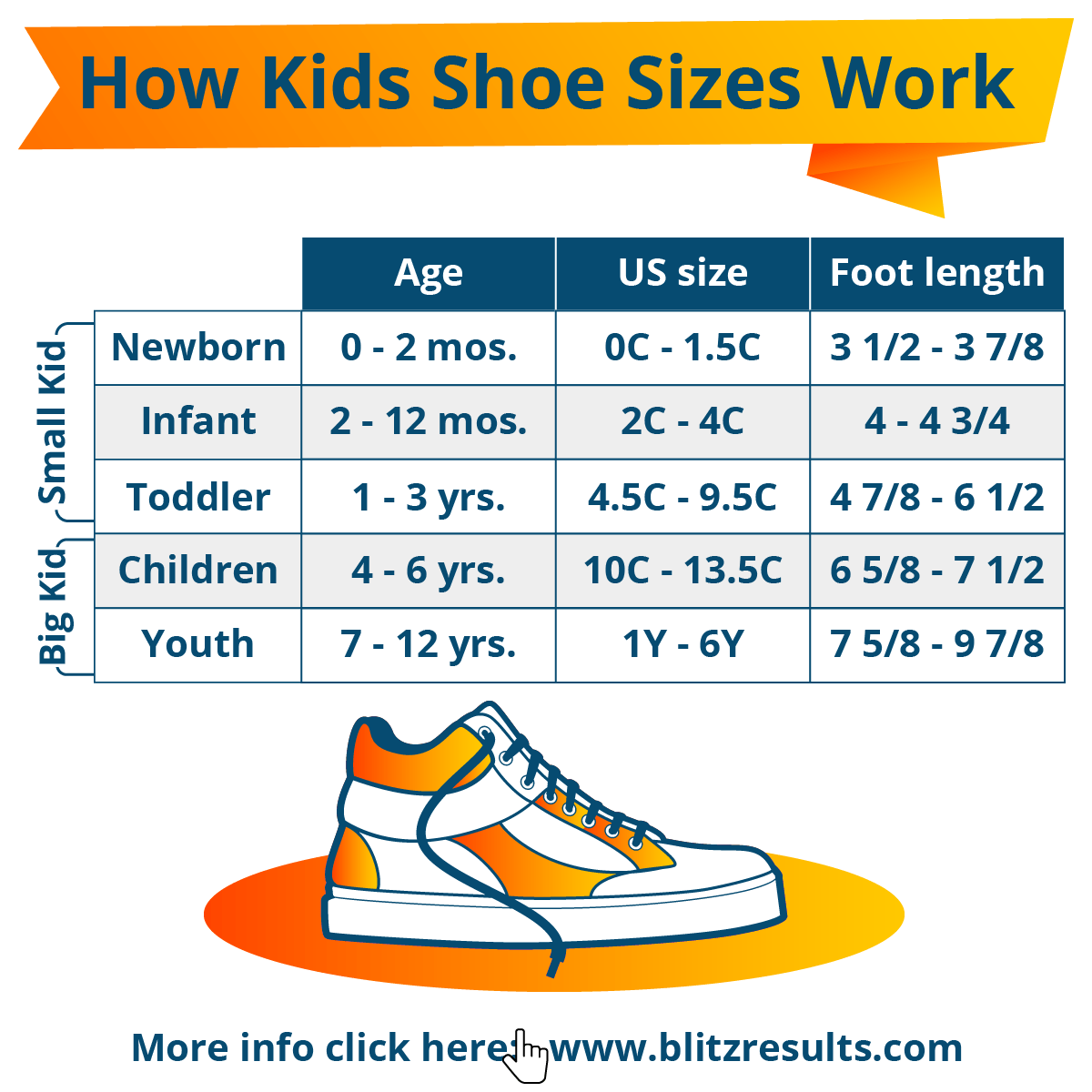
Credit: ntech.io
Frequently Asked Questions
What Sizes Do Toddler Shoes Come In?
Toddler shoes typically range from size 0 to 13, accommodating children’s growing feet.
How Do I Measure My Toddler’s Feet?
Measure your toddler’s feet by using a ruler or measuring tape to determine the length and width accurately.
What Is The Average Toddler Shoe Size?
The average toddler shoe size is around 5 to 7, depending on age and individual growth patterns.
How Often Should I Buy New Toddler Shoes?
New toddler shoes are needed every 2-3 months, as children’s feet grow rapidly during this stage.
Conclusion
Choosing the right shoe size for toddlers is important. It helps their feet grow healthy. Always measure their feet before buying new shoes. Remember, sizes can vary between brands. A good fit keeps your child comfortable. Happy feet lead to happy playtime! Keep this guide handy for future purchases.



